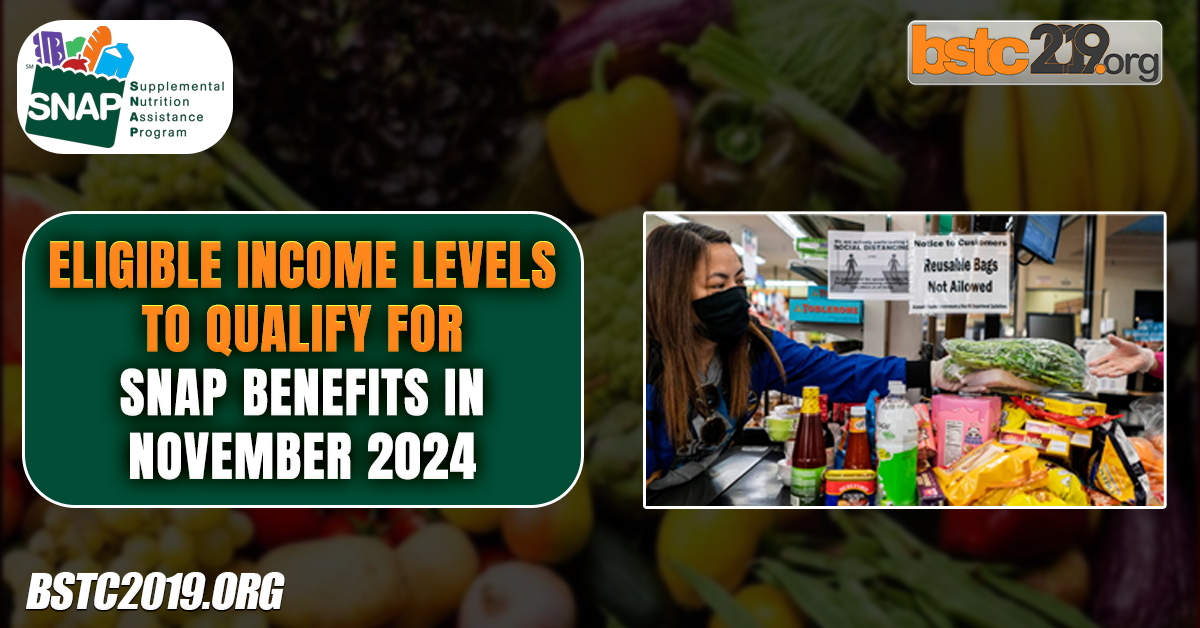Eligible Income Levels To Qualify For SNAP Benefits
Eligible Income Levels To Qualify For SNAP Benefits. SNAP (Supplemental Nutrition Assistance Program) assists low-income households with food purchases, aiming to help those with limited income afford a nutritious diet. Eligibility requirements include income limits, household composition, and resources.

Understanding SNAP
SNAP provides financial aid to eligible individuals and families for purchasing food. Federal rules based on income and resources ensure that assistance reaches those in need.
Determining Household Size and Composition
A household for SNAP includes everyone living together and preparing meals together. This includes both family and non-relatives. Accurate reporting of household size is critical as it affects benefits calculation.
Income Eligibility Limits
Income limits are a key part of SNAP eligibility, generally requiring gross monthly income to be at or below 130% of the poverty line. For example, in 2024, a family of three must meet this threshold.
| Household Size | Gross Monthly Income Limit (130% of Poverty Line) |
|---|---|
| 1 | $1,473 |
| 2 | $1,984 |
| 3 | $2,495 |
Calculating Eligible Income Levels and SNAP Benefit Amounts
SNAP benefit amounts are based on your household’s net income, which is gross income minus deductions. The lower your net income, the higher your benefits.
Example Calculation: If your net income is $500, 30% is $150. If the maximum benefit for your household is $800, then your SNAP benefit would be $800 – $150 = $650.
Special Considerations
Special rules may apply for households with older adults or disabled individuals, including higher asset limits and additional deductions. In some states, Broad-Based Categorical Eligibility (BBCE) simplifies requirements by broadening income limits.
Assessing Resources and Allowable Deductions
Countable resources include assets like bank accounts, stocks, and bonds. Resource limits are $2,750, or $4,250 if at least one member is over 60 or disabled. Allowable deductions such as housing, child care, and medical expenses can reduce countable income, impacting eligibility.
How to Apply for Eligible Income Levels To Qualify For SNAP Benefits
Start by contacting your state or county SNAP office. Applications are available online, by phone, or in person. After submitting, you may need an interview to verify your details and determine eligibility.
Required Documentation
- Proof of Identity (e.g., driver’s license, state ID)
- Proof of Household Income (e.g., pay stubs, employer letter)
- Household Expenses (e.g., rent/mortgage, utility bills, medical expenses)
FAQs About Eligible Income Levels To Qualify For SNAP Benefits
What are the income eligibility requirements for SNAP benefits in 2024?
Generally, gross monthly income should be at or below 130% of the poverty level. Deductions help calculate net income, which should be at or below 100% of the poverty level.
Can I qualify for SNAP benefits if my monthly income is $1,800?
Eligibility depends on factors such as household size and deductions. For a single-person household, $1,800 may exceed the gross income limit. Review your state’s specific guidelines.
Has there been an increase in SNAP benefits in 2024, and what are the new amounts?
SNAP benefits were updated for fiscal year 2024 to reflect cost-of-living changes, impacting the amount received by eligible households.
What are the CalFresh income limits for a single-person household in 2024?
California’s CalFresh program has its own income limits. A single-person household must meet both gross and net income limits, with specific exceptions for age or disability.
Can a household earning $3,000 per month be eligible for SNAP benefits?
A household earning $3,000 per month may be eligible depending on household size and deductions. Gross and net income limits vary by state, so check specific requirements.
